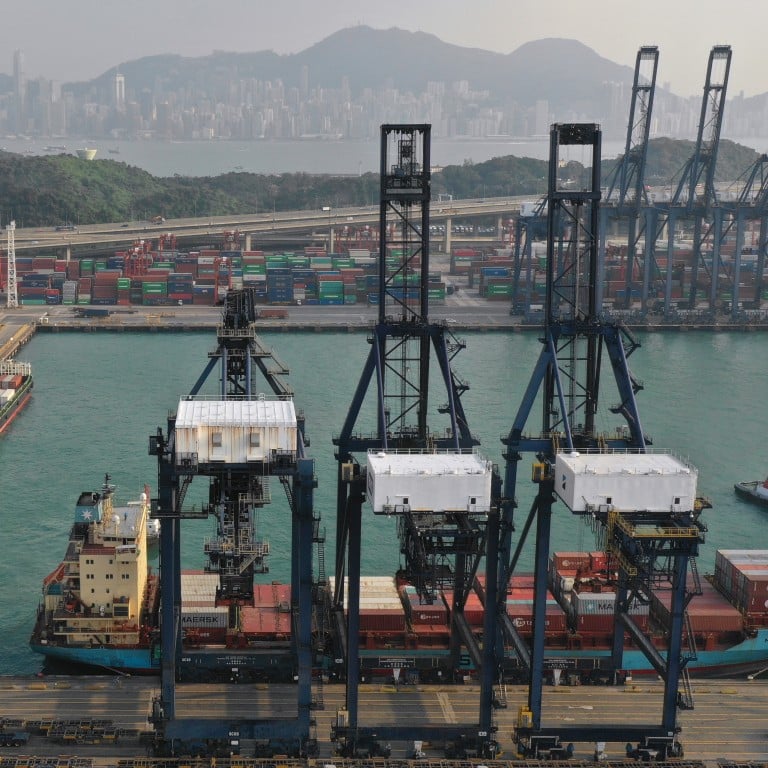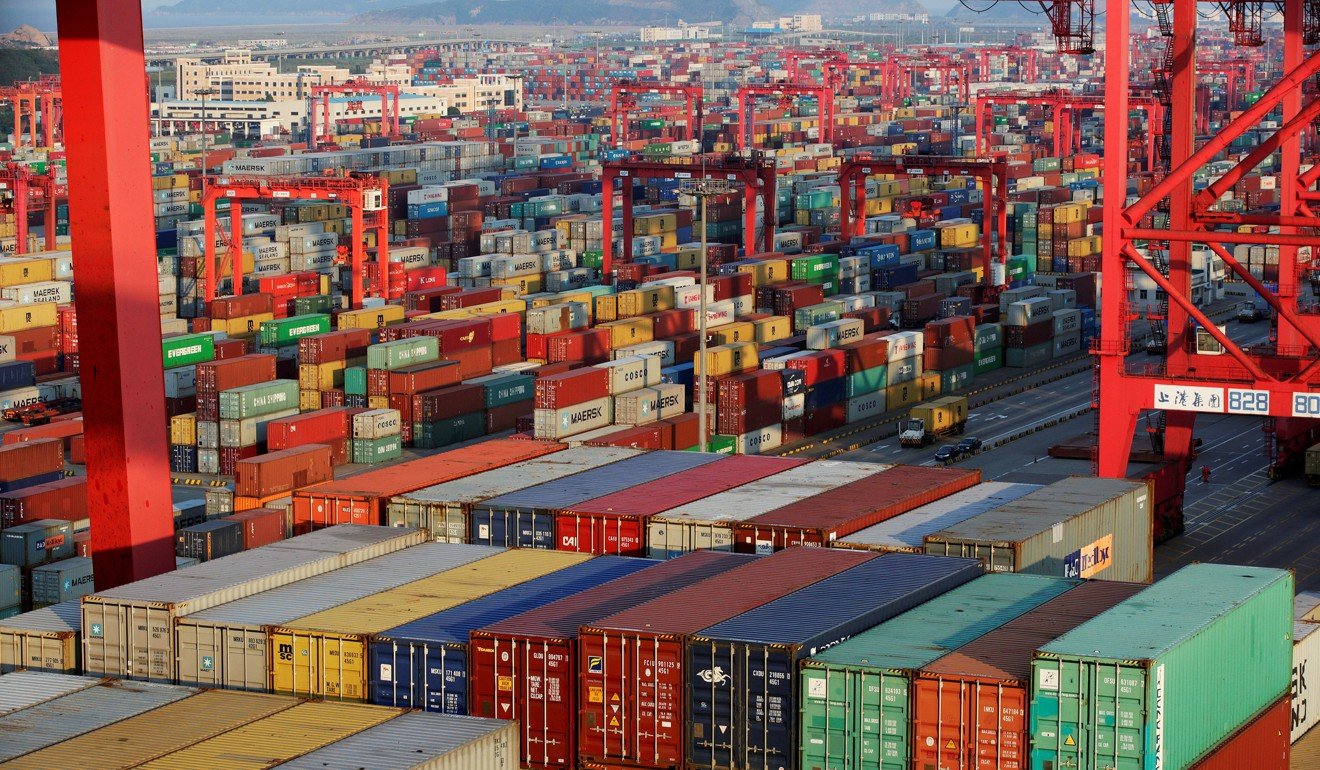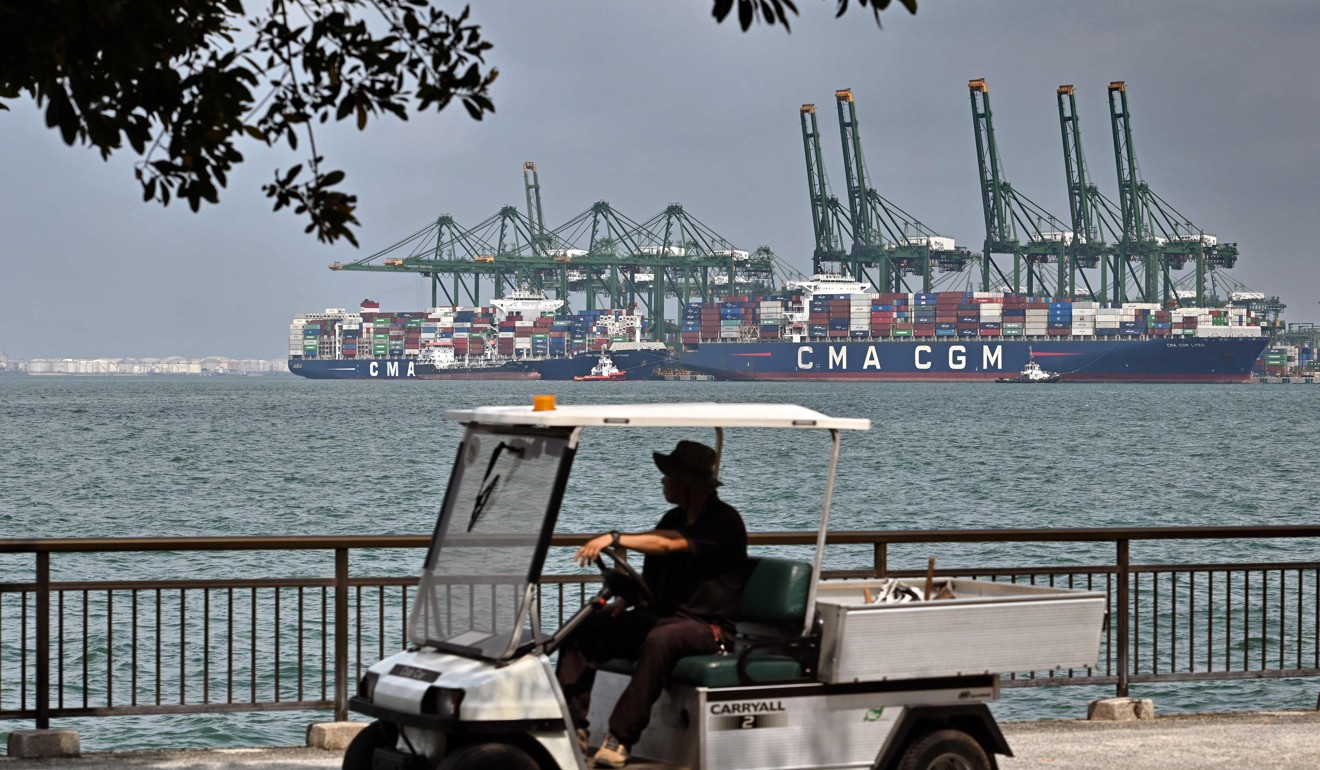
What sank Port of Hong Kong’s claim to world’s shipping crown?
- Once the world’s busiest port, Hong Kong now trails Singapore and various mainland rivals
- Can it turn things around, or has this ship sailed?
The year was 1988. Fresh off his maiden voyage to Asia, Bjorn Hojgaard, then just a 20-year-old seaman, stepped onto the shores of Hong Kong – and it was the scent that hit him first.
“I remember Hong Kong for the smells because they were so foreign,” recalled Hojgaard, who is chief executive of Hong Kong-based ship-management firm Anglo-Eastern Group. “It was literally a fragrant harbour.”
So bustling was the Kwai Tsing Port, the ships that docked there even morphed into “markets” of their own, with locals going aboard and lining the hallways with their wares, selling anything from watches to T-shirts and toys.
Boom times over as Hong Kong drops out of top 5 ports for first time
Where it once drew the most container traffic in the early 2000s, the Port of Hong Kong has been steadily slipping down the ranks of the world’s top ports.
In 2018, the city fell two notches to seventh place, as ports like Guangzhou in mainland China as well as Busan in South Korea caught up. It looks set to be overtaken in 2019 by the Port of Qingdao, which moved more boxes than Hong Kong in the first 11 months of last year. Throughput at the Port of Hong Kong came up to 16.8 million twenty-foot equivalent units (TEUs) as of last November, down 6.2 per cent from a year ago, going by latest estimates from the Hong Kong Maritime and Port Board Secretariat.
“It’s a move by the seaport terminal operators to try to save themselves, [or] they would die a lot faster,” said Collin Wong, associate dean of the School of Decision Sciences at the Hang Seng University of Hong Kong.

LOSING THE MARITIME CROWN
Things were not always so bleak. Hong Kong’s maritime roots are, after all, tied to its role as a conduit for trade even from the 1800s, given its strategic location at the southern tip of China and its natural deepwater harbour.
A 2013 OECD Working Paper described the Port of Hong Kong’s growth between 1972 and 2012 as “phenomenal”, noting that it had expanded to 18 times its original size, compared with a growth factor of 10 in Singapore, its oft-cited competitor. Container throughput and growth rates of the two were also similar throughout the 1980s and 1990s.
By the early 2000s, Hong Kong was dominating the world stage in terms of container volumes, as mainland China opened up its economy and became the world’s factory.
Hong Kong’s declining port should be run more ‘like the subway’, analysts say
“At that time, if you’re talking about ports in Yantian, Nansha, they were not developed well and they did not have the systems or laws to support shipping,” Wong said. “So factories there in the southern coastal part of China – most of which were Hong Kong companies that had moved their manufacturing there – preferred to ship everything to Hong Kong, and then out to the rest of the world. It also helped that the city’s port charges then were very competitive, while economies around the globe were focused on open trade and growth.”
The government didn’t … do more to move to the next level. For 10 years we were happy to be No 1. And that was it.
It was during the second half of the 2000s that Hong Kong lost pace – with Singapore swooping in first to take over the top spot, followed by Shanghai, which has remained the world’s biggest port since.
Specifically, the rise of ports on the mainland has been exponential. Guangzhou, for instance, clocked an average annual growth rate of 57 per cent in the decade between 2002 and 2012, Shanghai came in at 28 per cent, and Shenzhen at 20 per cent, compared with Hong Kong’s 2 per cent, according to the OECD report.
As a result, the OECD noted, Hong Kong lost its position as the largest port of the region and lost market share to the ports of Shenzhen and Guangzhou.

“When other ports like Shanghai and Shenzhen became able to handle their own volumes, shippers started to use those ports and the flow of cargo moved away from Hong Kong,” said Roberto Giannetta, executive director of the Hong Kong Liner Shipping Association (HKLSA). “It was no longer the only gateway to China.”
In yet another move that demonstrated mainland China’s rising eminence as a maritime power, China Cosco Shipping in 2018 completed its US$6.3 billion takeover of Hong Kong’s Orient Overseas Container Line (OOCL), becoming the world’s third-largest container shipping company. On January 1, Andy Tung of the formerly family-owned business stepped down as co-chief executive at OOCL and executive director of OOCL’s parent company, Orient Overseas (International) (OOIL). He remains a non-executive director on the board of Hong Kong-listed OOIL.
The types of goods that go through Hong Kong also provide a clear sign of how times have changed. Where it used to handle 70 per cent direct imports/exports and 30 per cent transshipment, the bulk of the goods at the port today are there for transshipment purposes.
Singapore’s moves to increase its berth rate are paying off
And even within the transshipment space, Hong Kong faces a fierce competitor in Singapore, the second-busiest port in the world after Shanghai, with some 34 million TEUs under its belt for the year as at November.
At the same time, carriers have anchored themselves more deeply in the city state, with French shipping giant CMA CGM moving its regional office from Hong Kong to Singapore in early 2017, and the then newly-formed Ocean Network Express (ONE) joint venture setting up its global headquarters there the same year.
“The government didn’t grasp the good times for Hong Kong and try to do more to move to the next level,” Wong said. “For 10 years we were happy to be No 1. And that was it.”

AN URGENT CALL FOR ACTION
The Hong Kong government in 2018 acknowledged that the city could not compete with its shipping rivals. That was why it had flagged “high value-added maritime services” in areas such as ship leasing and insurance as a key area of focus instead.
“We are well-placed to do all of that,” said Giannetta of the HKLSA. “But if someone is going to do ship finance, they would want to come to where the decisions are going to be made for shipping companies. Yet, more and more shipping companies are moving away from Hong Kong because it is no longer a must-call port.”
To stay relevant, Hong Kong port unveils remote-controlled cranes
The fact that transshipment was inherently a mobile business remained a risk, he said. “Let’s say there are six companies doing transshipment in Hong Kong. You have to get agreement from all six before moving this somewhere else. To get that impetus to move is not easy, but if it happens, Hong Kong will be dead in the water.”
Giannetta said the port’s shrinking numbers would continue unless the Hong Kong government took action to resolve issues that caused roadblocks for the industry. For one thing, the association has been pushing for the government to relax air draft restrictions at the Tsing Ma Bridge for seven years, so bigger vessels would be able to traverse Hong Kong waters. Having a single port authority to bring all stakeholders together on the same page would also be crucial, he said.

But there is good news for now – from the private-sector side, at least.

The creation of three zones inside the Port of Hong Kong to provide customers and their shipping alliances with dedicated or home berths had allowed the alliance to slash inter-terminal trucking by half, said Levesque, who will step into his new role as president of Ports America next month. Previously, as many as 90,000 trucks were moving between terminals every month.
He noted that the speed at which ships come into and leave Hong Kong had also increased, translating into cost savings for the terminal operators’ customers.
“Just picture operating four airports as one. By coming together, we’re able to operate from a single control tower and put the right ship to the right berth at the right time, and that just makes the entire operation much more efficient,” Levesque said.
“Through that efficiency, there are cost savings, and through those cost savings we’re able to compete as a transshipment hub against other hubs like Tanjung Pelepas [Malaysia], Korea, Taiwan, and Singapore. So that was the objective.”
Levesque said an ongoing investigation by the Competition Commission – to investigate whether the alliance would prevent, restrict or distort competition in Hong Kong – had put a spanner in his earlier target to reclaim 2 million TEUs in volumes from regional rivals by 2020, but the group would likely push the target out to 2021 instead.
Hong Kong democracy act likely to have little impact on shipping sector
Amid the port’s declining figures, Singapore-based shipping consultant Andy Lane of CTI Consultancy pointed out that Hong Kong had continued to maintain volumes of around 19 to 20 million TEUs per year, which was still a substantial quantity.
And even without the use of automation on a big scale, its productivity levels remained on a par with those of many Asian ports, he said.
“So there are a lot of positives still. We cannot consider Hong Kong a dying port, and it remains a key port in global networks.”
At the same time, Hojgaard, who is chairman of the Hong Kong Shipowners Association, believes that Hong Kong’s unique strengths – from a transparent and stable tax regime to strong institutions in law and business, and an open capital economy – can help create a strong Greater Bay Area (GBA). “Hong Kong can bring those elements to the table and leverage the idea of an integrated GBA, and that will mean huge potential for further growth. I think Hong Kong’s fate as a shipping hub will be closely tied to being part of that bigger picture.”
“What we need to do is to get out and address this over communicative dialogue,” he said. “The government needs to go out to the world to say ‘We’re open for business’. That’s going to be essential. Otherwise we’re just going to miss the boat again.” ■

